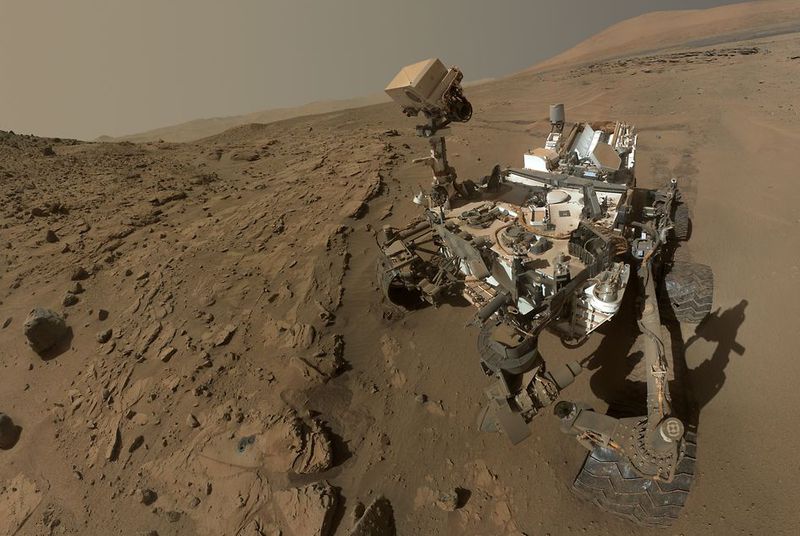
NASA's Curiosity rover has detected yet another ingredient for life on Mars: nitrogen that would have been usable by living organisms. Nitrogen is required for all life on Earth, but it has to be in a certain "fixed" state before it's accessible to many forms of life, like plants. That's the way researchers found it in samples collected on Mars. The finding suggests that Mars could have supported a nitrogen cycle, which on Earth involves bacteria creating fixed nitrogen, which then works its way into plants, and eventually back into the soil, where the cycle repeats. In Mars' case, the found nitrogen likely arose from lightning strikes or heat from an impact. But the researchers say that it's enough to warrant continued research into evidence for an ancient nitrogen cycle on Mars.
"Life runs on nitrogen as much as it runs on carbon."
"People want to follow the carbon, but in many ways nitrogen is just as important a nutrient for life," Jennifer Stern, who led the research at NASA, tells the Los Angeles Times. "Life runs on nitrogen as much as it runs on carbon." The report points out that critical elements of life, including RNA and DNA, require nitrogen. The research was published Monday in Proceedings of the National Academy of Sciences.
The presence of nitrogen, detected as nitric oxide coming from nitrates in the soil, was still fairly small. The researchers say that it was found in amounts an order of magnitude smaller than they would be found in Chile's Atacama Desert or the Dry Valleys of Antarctica. Those low levels, it suggests, are likely because we are now observing the remnants of ancient nitrogen fixation amid changed atmospheric conditions.
In a separate paper, also published Monday in Proceedings of the National Academy of Sciences, research from Louisiana State University points to potential source of energy for life on Mars: carbon monoxide. The paper suggests that carbon monoxide, which is found in "relatively high concentrations" in Mars' atmosphere, could be used as a "significant energy source" for microbes on or near the surface. "Of course, it must be noted that the persistence of extant microbial populations, if any exist, or populations transplanted in the future, depends on factors other than energy substrates," the paper notes. Nonetheless, it suggests that additional work could be put into determining just how conducive Mars may have been to microbial growth in this manner at an earlier point in its history.
Verge Video: What it takes to colonize MarsDownload video: http://www.theverge.com/rss/redirect.mp4?url=http://ak.c.ooyala.com/5haWw0cTrZq2t5eN9xI12cNASA3d01uk/DOcJ-FxaFrRg4gtDEwOjFpaDowODE7jj

 Want to understand why far-reaching, poorly scrutinized spying programs are dangerous? Here's why. The Intercept and the New Zealand Herald have obtained a document showing that New Zealand used the US National Security Agency's XKeyscore surveillanc...
Want to understand why far-reaching, poorly scrutinized spying programs are dangerous? Here's why. The Intercept and the New Zealand Herald have obtained a document showing that New Zealand used the US National Security Agency's XKeyscore surveillanc...

/cdn0.vox-cdn.com/uploads/chorus_asset/file/3526478/21fda1-web-articleLarge.0.jpg)